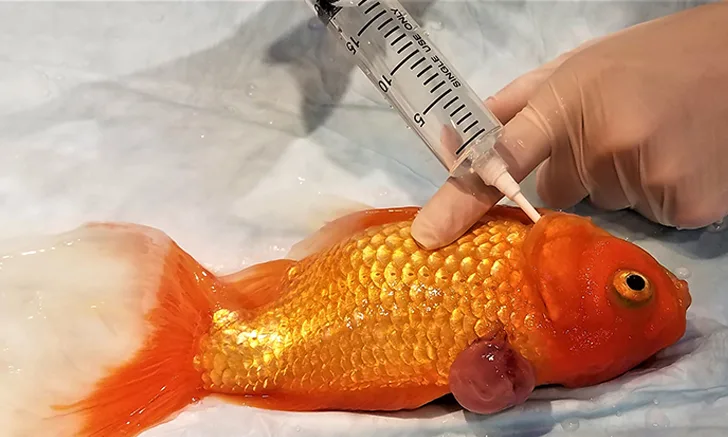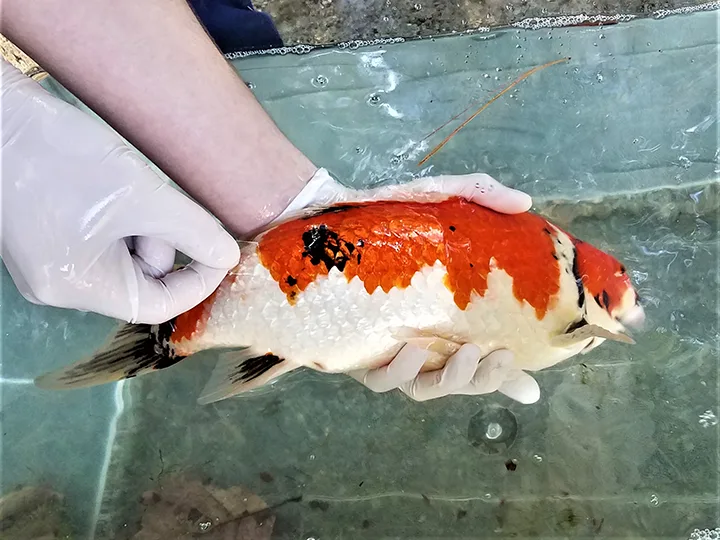Image Gallery: Fish Diseases
Colin McDermott, VMD, CertAqV, Mount Laurel Animal Hospital, Mount Laurel, New Jersey

Many diseases of fish are subtle until the infection or pathologic process is more advanced. Veterinary care is often complicated by owners missing early signs of illness and seeking veterinary care later in the course of disease.
A thorough history and husbandry evaluation should be performed prior to examination. Visual clinical signs are generally not pathognomonic for many diseases, and diagnostic testing for definitive identification of disease is required. Skin/mucus cytology, gill biopsy or endoscopic evaluation, culture and susceptibility testing, or biopsy and histopathology should guide appropriate therapeutic choices. Doses and duration of various medications are discussed at length elsewhere.1,2,3 Because of the risk for human exposure through water and the possible dumping of wastewater after therapeutic treatment, judicious use of antibiotics and antiparasitic medication is recommended.
The following images offer an overview of several types of fish diseases.

FIGURE 1
Healthy koi sedated for skin cytology
The normal appearance of fish can vary greatly. Both scaled and scaleless fish are typically coated in a mucus layer that acts as a natural protection from infection. This protective mucus layer is considered immunologically active4; thus, disruption of this layer and underlying skin can make the fish more susceptible to skin lesions and infection.
HLLE = head and lateral line erosion